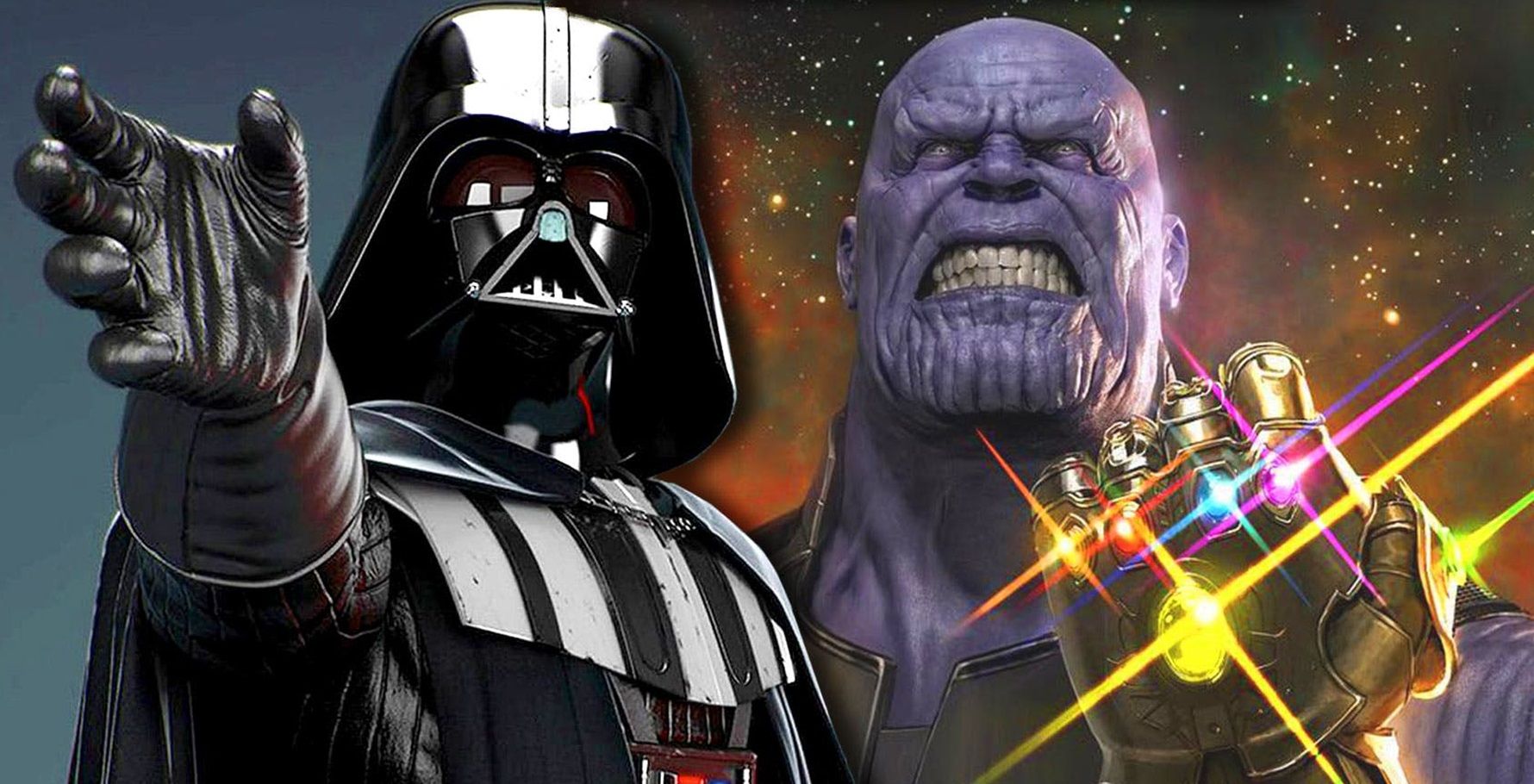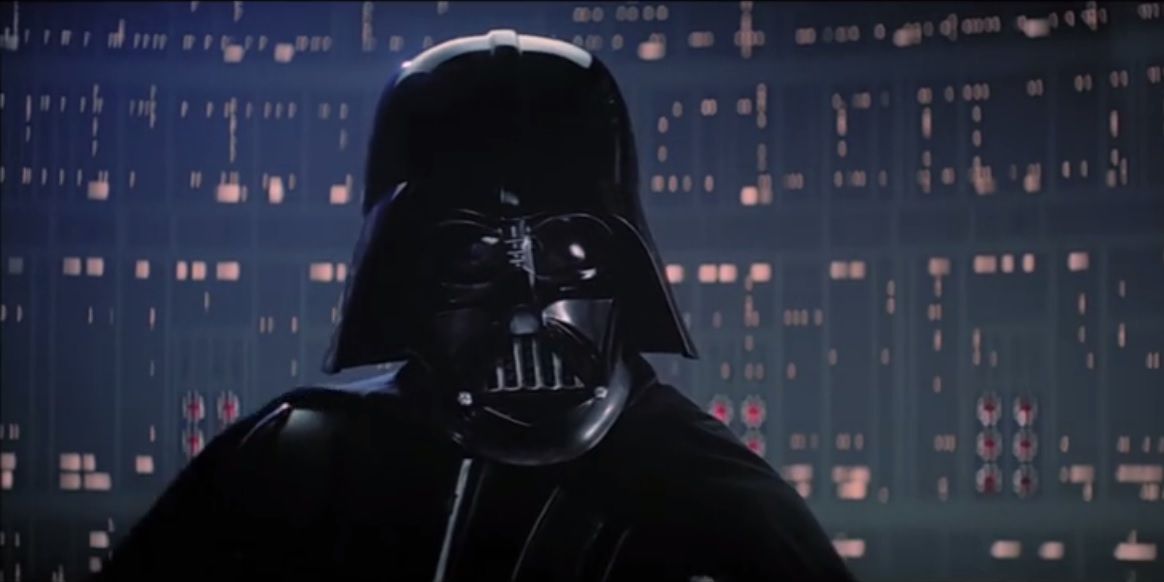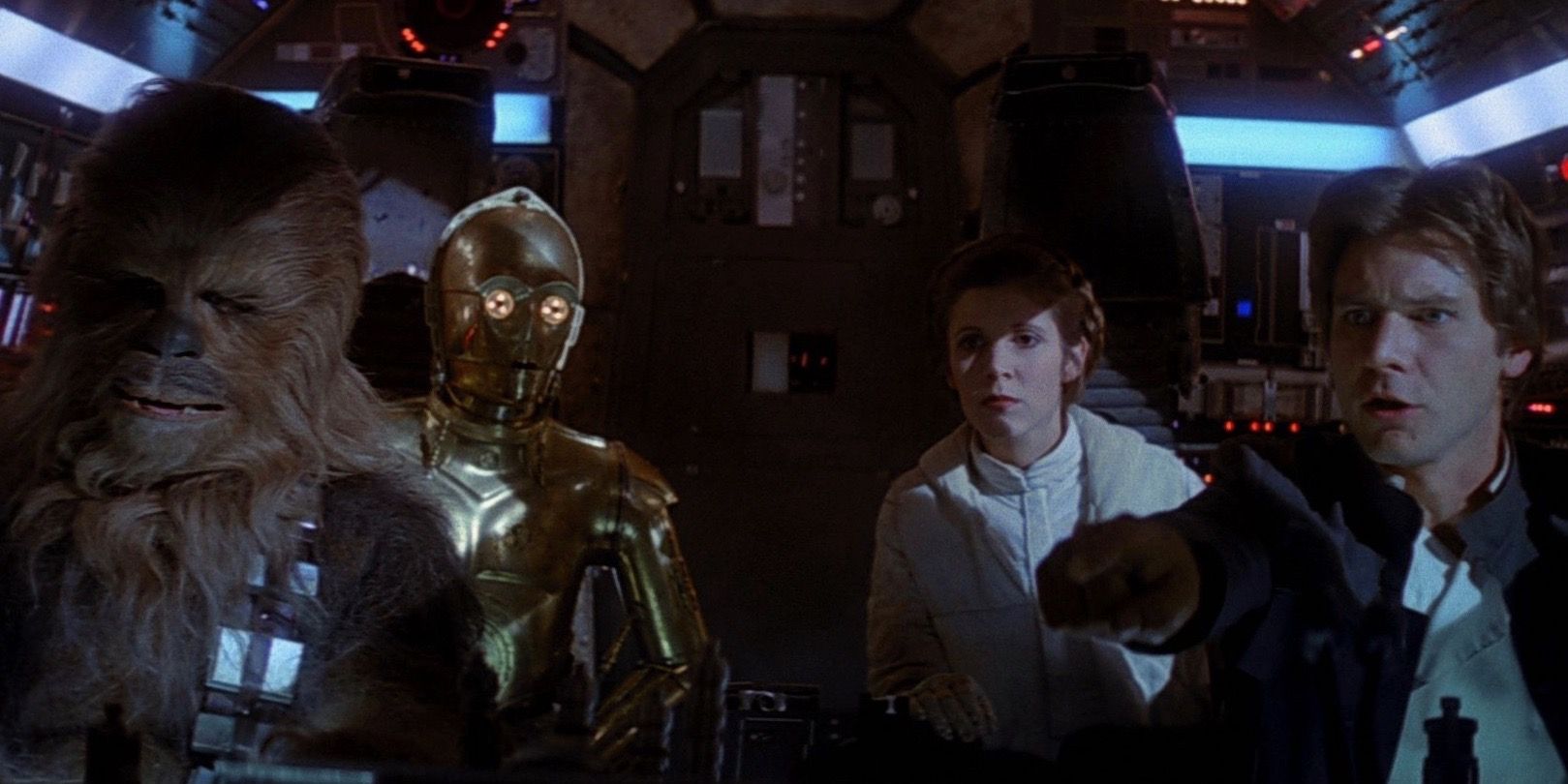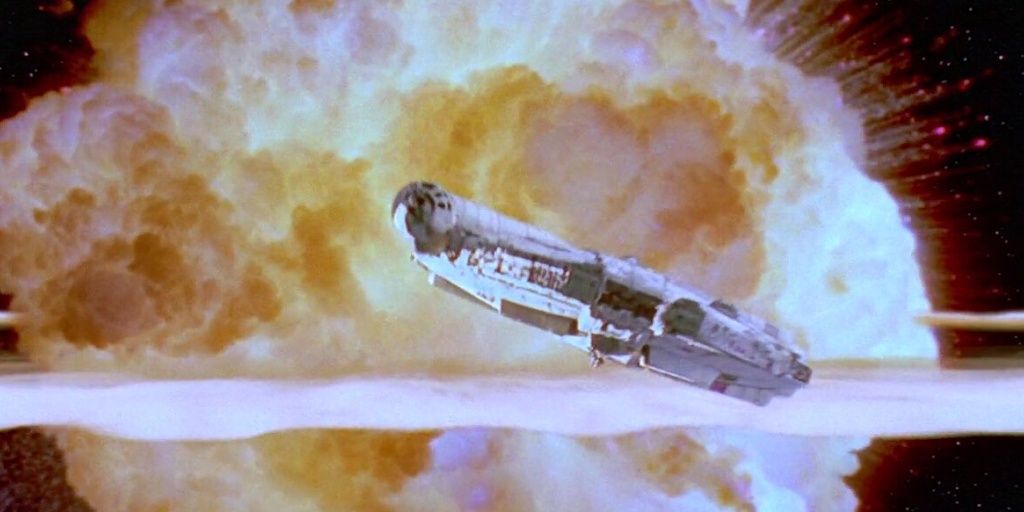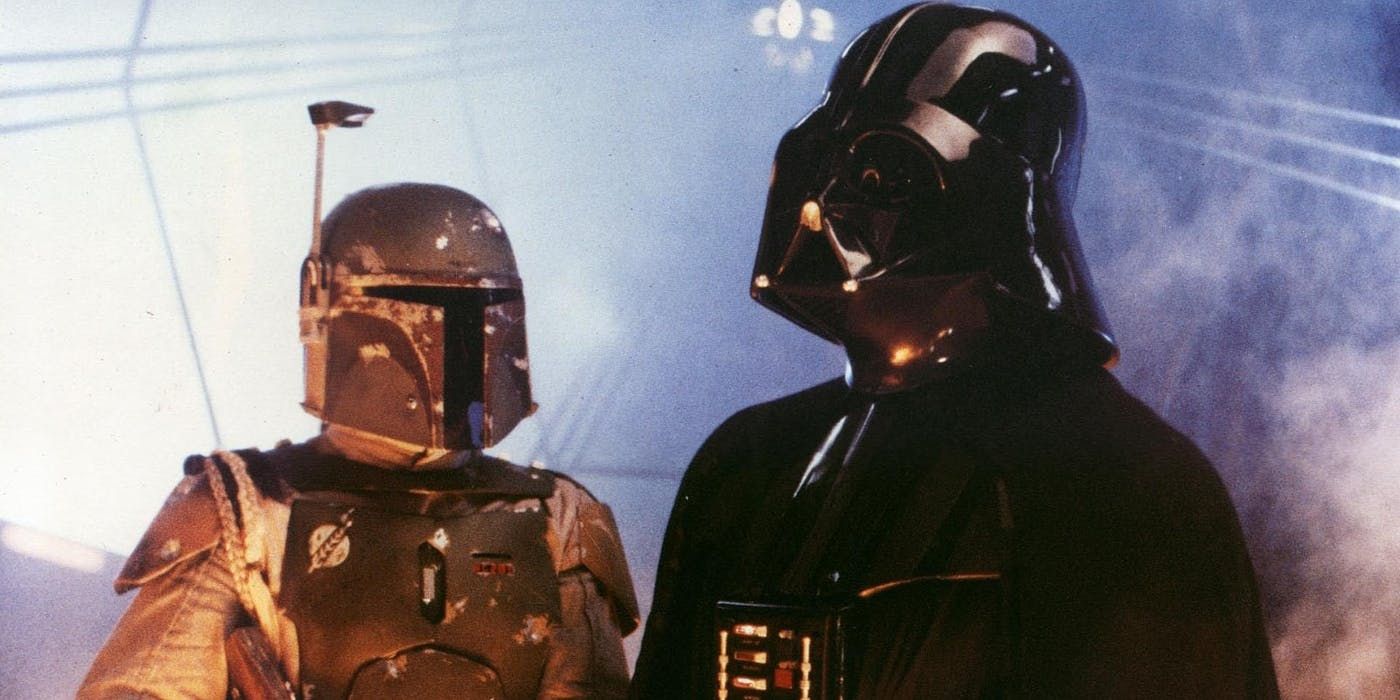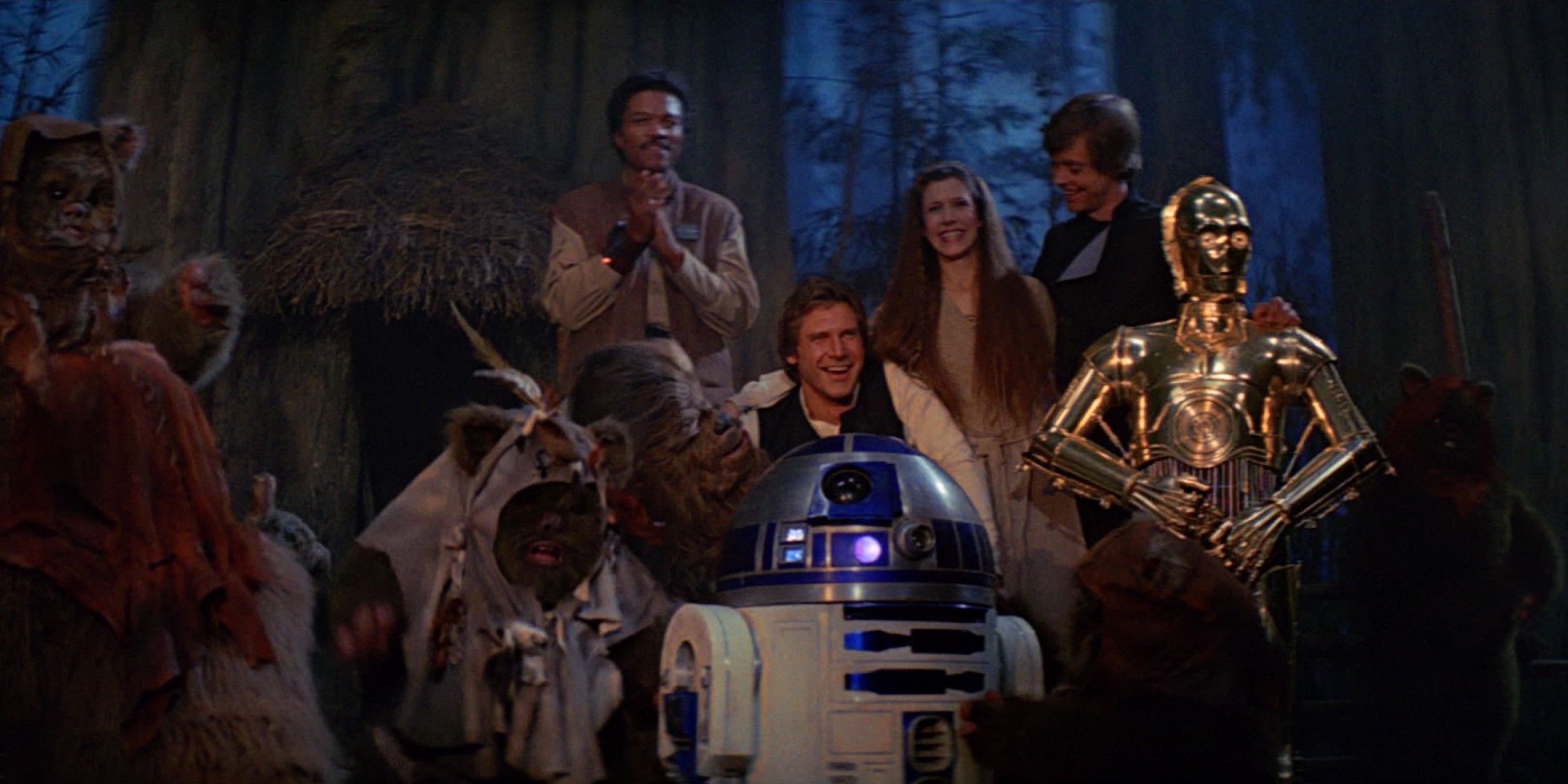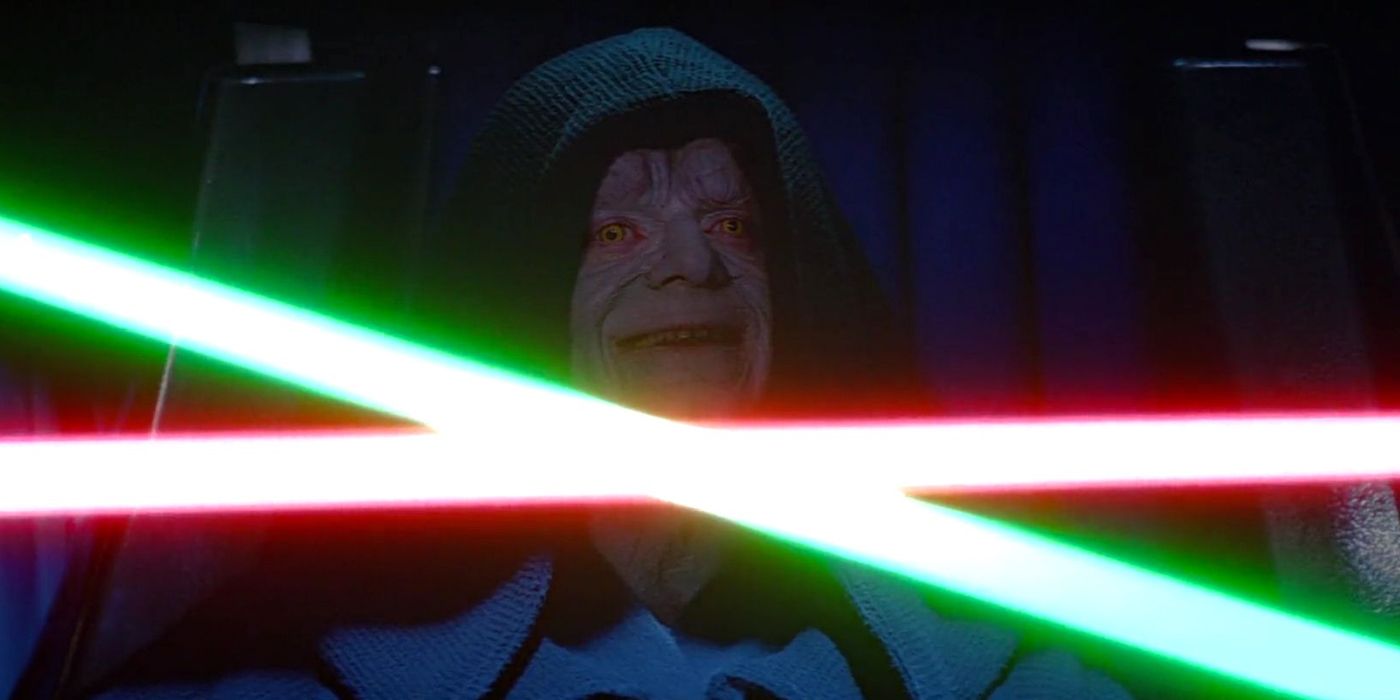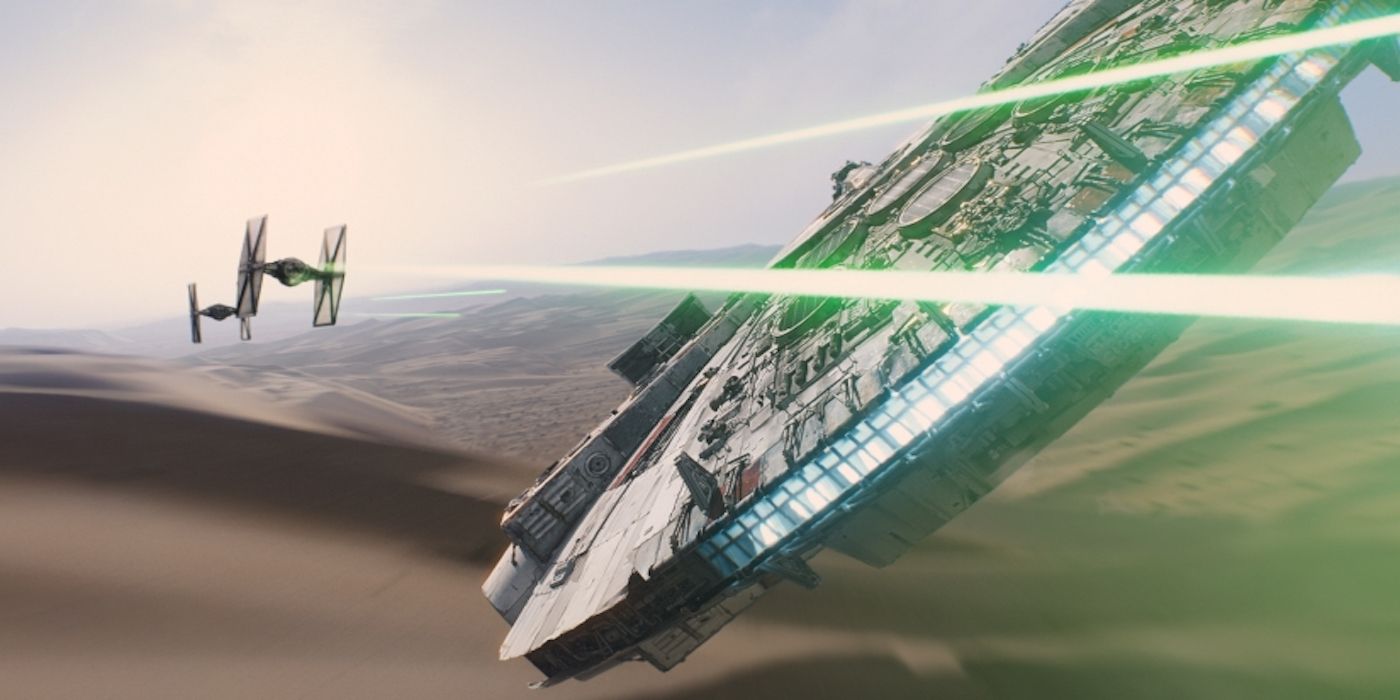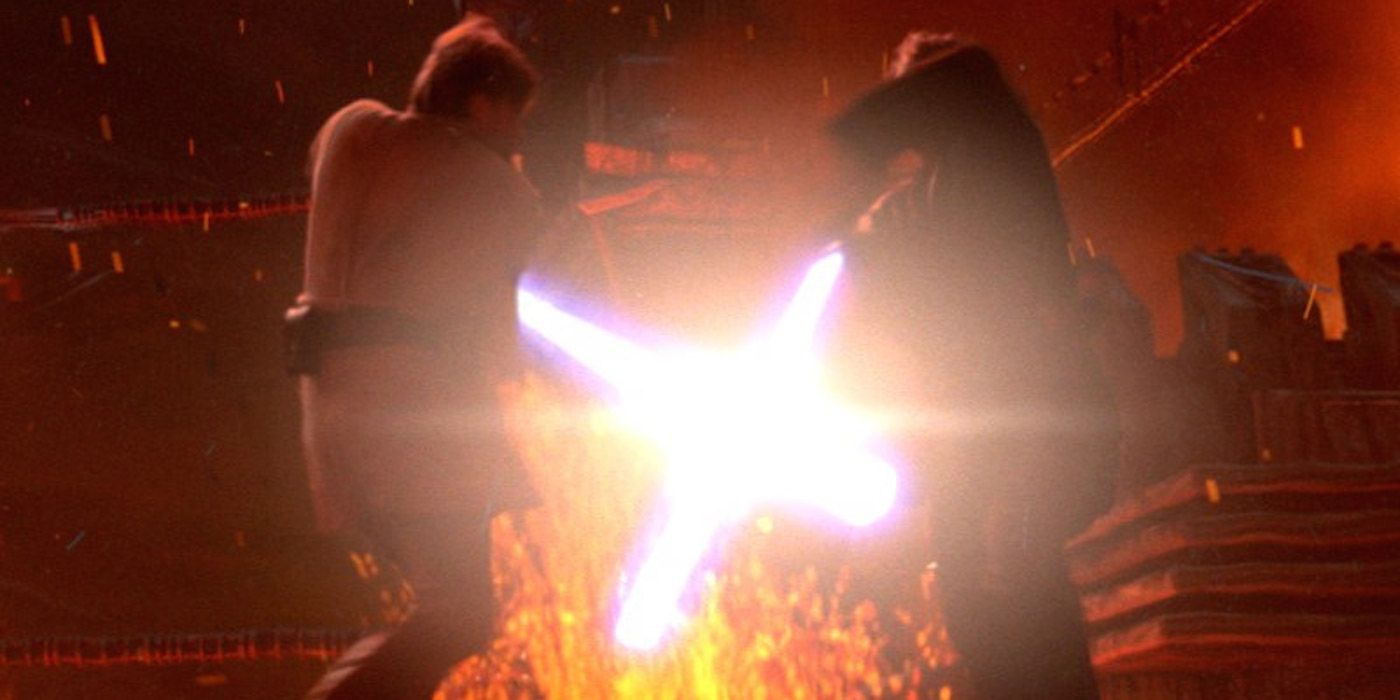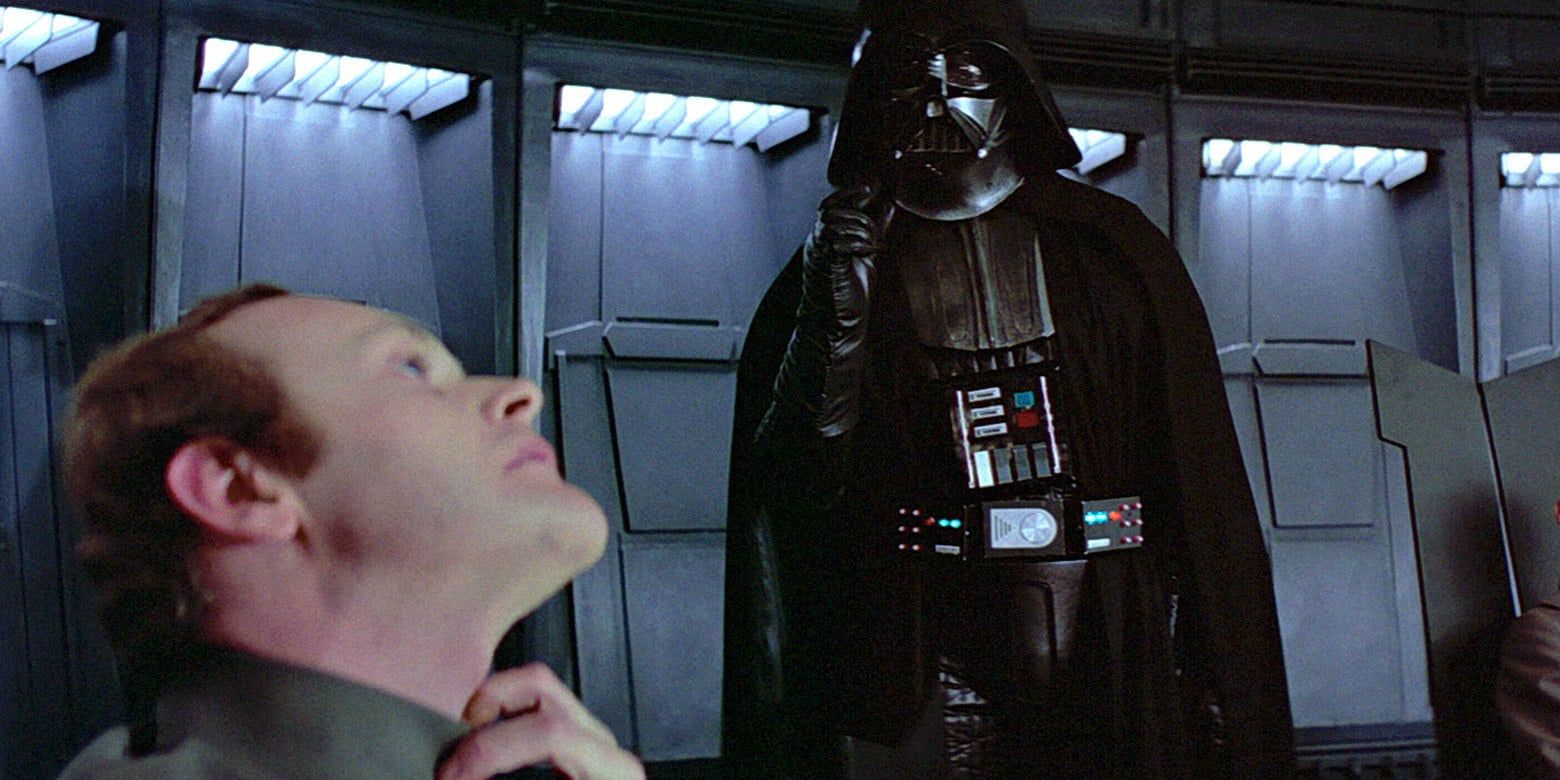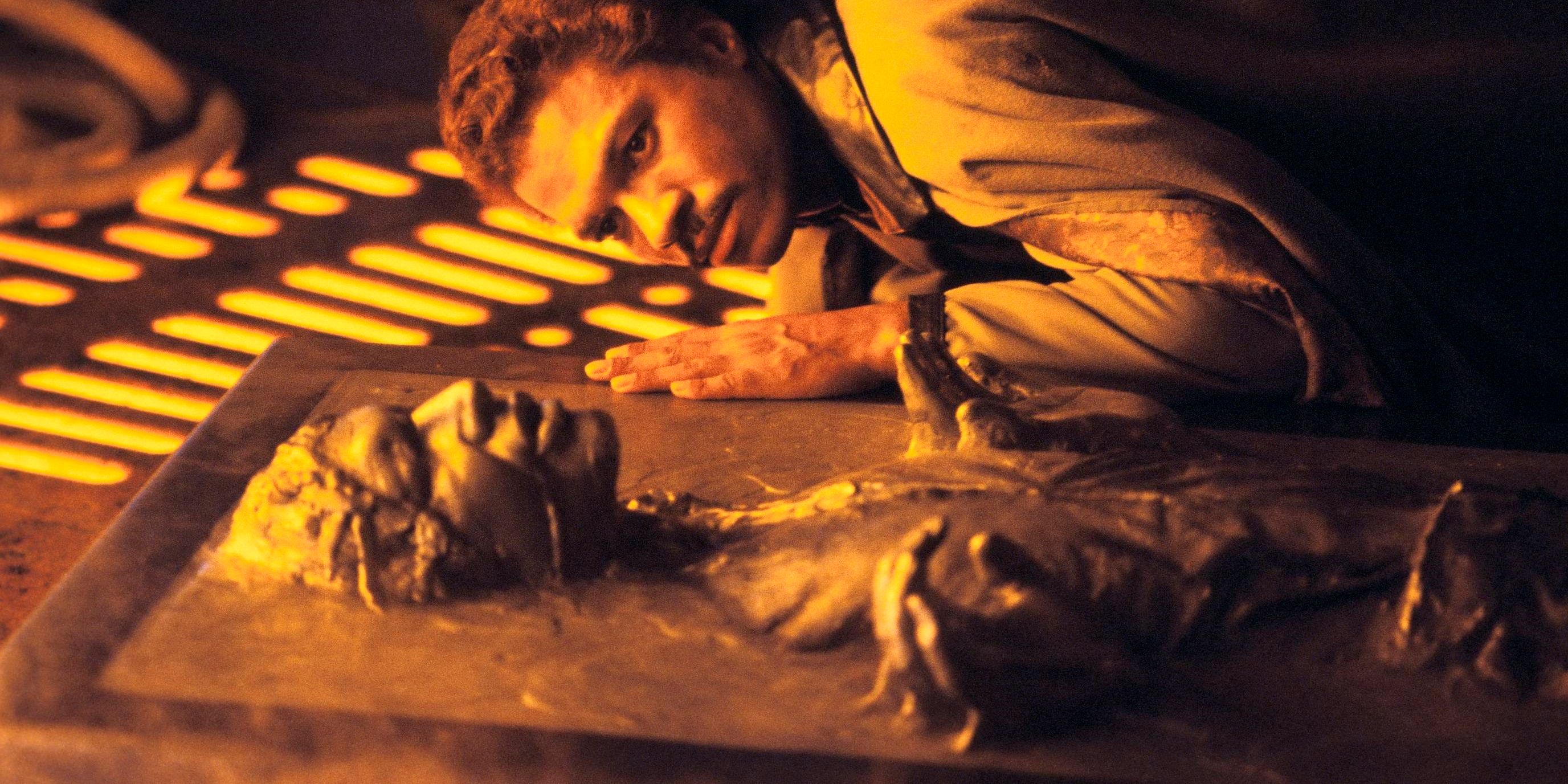It has often been said that the Marvel Cinematic Universe is to today’s moviegoing public what the Star Wars trilogy was to audiences of the ‘70s and ‘80s. While this has been highly debated, since Star Wars literally changed the way that movies were made and it’s unclear how lasting the MCU’s impact will be since we’re still in the middle of it, there are some elements of the MCU that appear to have been inspired by the original Star Wars trilogy.
In both specific plot points and broader business terms, here are 10 Ways Star Wars has influenced the MCU.
A jaw-dropping plot twist in the 11th hour
Easily the most memorable plot twist in film history comes in the final act of The Empire Strikes Back, when Darth Vader tells Luke Skywalker, “I am your father.” It was the lowest point in the trilogy, with the Empire winning, Luke’s hand getting severed, and Han being captured – that’s when the twist hit. No movie yet has topped that twist, and since it set the gold standard, there’s a good chance that no movie ever will.
However, Infinity War came close. Thanos’ finger-snap came at the same low point in the Avengers saga and it was an unforgettable bombshell ending. The villain won, Earth’s mightiest heroes were defeated, and half the protagonists were turned to dust.
Breaking up the characters in ensemble movies
In Avengers: Infinity War, when Thanos’ threat becomes imminent, the superheroes all split up into groups. Rocket and Groot go to Nidavellir with Thor; Iron Man, Spider-Man, and Doctor Strange jet off to Titan where they’re joined by the other Guardians of the Galaxy; and everyone else rallies behind Captain America and Black Panther in Wakanda.
This storytelling technique in ensemble sci-fi epics goes back to early superhero team-ups like X2, but it goes even further back to Star Wars movies like The Empire Strikes Back. Luke and R2-D2 go to Dagobah to meet Yoda, while Han, Leia, Chewie, and C-3PO are chased across the galaxy by the Empire.
Ending each movie with a battle sequence
Like Star Wars, every MCU movie ends with a climactic battle sequence. These battles can be a simple fight between the hero and the villain – like Luke and Vader’s lightsaber duel in The Empire Strikes Back or Spidey and the Vulture’s scuffle on an invisible Stark Industries cargo plane in Spider-Man: Homecoming – or gargantuan skirmishes involving entire armies – like the Death Star trench run in A New Hope or the Battle of New York in The Avengers.
In each case, the saga culminated in the biggest battle of all: the Battle of Endor in Return of the Jedi and the Battle of Earth in Avengers: Endgame.
Immersive world-building
From Mos Eisley Cantina to the Death Star to Cloud City, the world-building in the Star Wars saga has always been beautifully designed and completely immersive. As fully realized locations, they genuinely feel like real places, no matter how outlandish they look. The world-building in the Marvel Cinematic Universe has clearly taken some cues from Star Wars.
From creating lifelike, detailed planets such as Knowhere, Titan, and Asgard to specific locations like Wakanda and the Quantum Realm, the world-building in the MCU hasn’t quite matched that of Star Wars, but it has come close and the influence of the latter shows in the former.
The power of the trilogy
MCU producer Kevin Feige is a huge believer in the trilogy as a storytelling technique. That’s why we never got an Iron Man 4 and why what arguably should’ve been an Avengers movie was shoehorned into the third Captain America movie. Okay, there are four Avengers films, but it could be argued that the last couple were a two-parter.
The first film trilogy to show off their blockbuster potential (but not the last, based on the success of The Lord of the Rings and Christopher Nolan’s Batman movies) and their importance in telling long-running narratives was the Star Wars trilogy.
Multi-movie audience commitment
In today’s franchise-adept climate, a trilogy isn’t considered to be a huge moviegoing commitment, but back in 1977, it was. Sequels were rare; two sequels were even rarer. But Star Wars hooked audiences in for a three-movie commitment. The MCU has done the same thing, but since most movies get a sequel these days, or at least try for one, the mega-sized commitment Marvel has demanded from audiences is 23 movies as opposed to three.
In the late ‘70s and early ‘80s, Star Wars fans were excited to see the Rebels continue their fight against Darth Vader, just like we kept coming back to see the Avengers continue their fight against Thanos.
Sound design
One of the most underrated aspects of both Star Wars and the MCU is their sound design. The sound designers of those franchises have had to come up with sounds for things that don’t even exist, and not only that, they’ve had to be memorable and instantly recognizable.
The sound effects for Star Wars were pioneered by the legendary Ben Burtt, who is responsible for the sounds of R2-D2’s beeping, Darth Vader’s breathing, and the hum of a lightsaber. These sound effects get the recognition they deserve, but the MCU’s sound effects don’t. From the whir of Iron Man’s repulsors to the clang of Captain America’s shield, the MCU’s sound design is unforgettable.
Jumping back and forth across the timeline
Star Wars fans are deeply divided over whether or not the prequel and sequel trilogies were a good idea. They certainly don’t live up to the original trilogy (but then, nothing could – nothing is ever going to recreate that sense of childhood wonder in a satisfactory way), but one thing is clear: jumping all over the timeline is an interesting way to tell a story.
Just like Star Wars went back to show us how wayward Jedi Padawan Anakin Skywalker became fearsome Sith Lord Darth Vader, the MCU went back to show us Howard Stark giving Captain America his shield during World War II after introducing his son Tony as a playboy turned superhero, or the origin story of the mysterious cosmic entity that Nick Fury paged following the devastating events of Infinity War. While the MCU timeline doesn’t 100% add up, it is relatively sound, at least where it counts.
A powerful, unforgettable villain
In the months leading up to the release of Avengers: Infinity War, the Russo brothers were very vocal about their intentions for Thanos to be as memorable a villain as Darth Vader, and even be considered as this generation’s Vader. It’s fair to say that they succeeded, partly because the MCU’s Mad Titan isn’t an out-and-out “bad” guy.
Or, at the very least, we can see why he thinks of himself as the good guy. He wants to wipe out half of all life to allow the other half to thrive with double the resources. He only kills people who stand in his way or lie, and he admires people like Steve Rogers and Peter Quill with the guts to stand up to him.
Serialized storytelling
When George Lucas first conceived Star Wars, he was inspired by the sci-fi serials of the 1940s like Flash Gordon. He grew up with those serials, and enjoyed the thrill of watching cliffhanger endings and waiting to see what happened in the next chapter.
This led to cliffhangers like Darth Vader surviving the destruction of the Death Star and Han Solo getting frozen in carbonite and shipped to a gangster’s palace to be hung on the wall. The Marvel Cinematic Universe has taken this kind of serialized storytelling to the next level, releasing three parts of its overall story each year.

